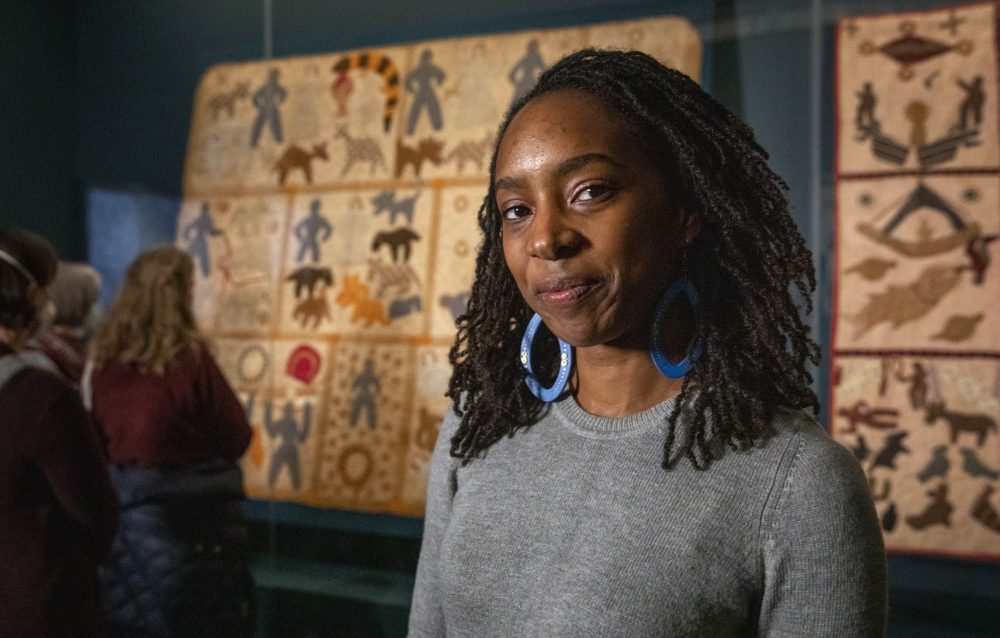Harriet Powers’ quilts leave a complicated legacy for her descendent

Alyse Minter, a descendent of Harriet Powers, the mother of the African American story quilt tradition. Two of Powers’ quilts are on display in the MFA’s exhibit “Fabric of a Nation: American Quilt Stories.” (Robin Lubbock/WBUR)
Two large quilts inside a glass case dominated a dimly-lit room at the Museum of Fine Arts in Boston. It was the last weekend of the exhibit “Fabric of a Nation: American Quilt Stories,” and the gallery bustled with visitors. Alyse Minter stood in front of the case, taking in the kaleidoscope of faded pinks and blues punctuated by the occasional pop of orange, still bright despite its age.
“These are obviously public treasures,” Minter said. “But they’re also a piece of my family history.”
Minter is the great-great-great granddaughter of the maker of the quilts, Harriet Powers. Powers, who was born in 1837 in Georgia, is widely considered to be the progenitor of African-American story quilt tradition, admired for her expressive original designs depicting natural phenomena and tales from the Bible. Only two of her quilts survive: the Pictorial Quilt, which lives at the MFA, and the Bible Quilt, which is part of the Smithsonian’s collection. They were exhibited together for the first time as part of “Fabric of a Nation.”
It was also the first time Minter had seen the two quilts side-by-side.
“As Black people, we don’t often get much passed down,” she said, voice cracking slightly. “So it’s a little bit emotional.”
Minter, a genealogist and research librarian at the Library of Congress, started researching her family history in 2007. She managed to trace her mother’s line back to Harriet and Armstead Powers, a married couple who were enslaved on separate properties in Georgia. They later became landowners after the Civil War.
Growing up in the D.C. area, Minter knew nothing of Harriet Powers’ quilts — nor that, for her entire childhood, one had sat in a museum not far from where she lived. Then, one day, Minter googled her great-great-great grandmother’s name. An article about the quilts popped up, along with a photograph of Powers.
“I recognized her face immediately,” Minter said. “My grandfather looks like her. My mother looks like her. My brother looks like her.”
Read the rest of this story and hear the audio version at WBUR.org.
